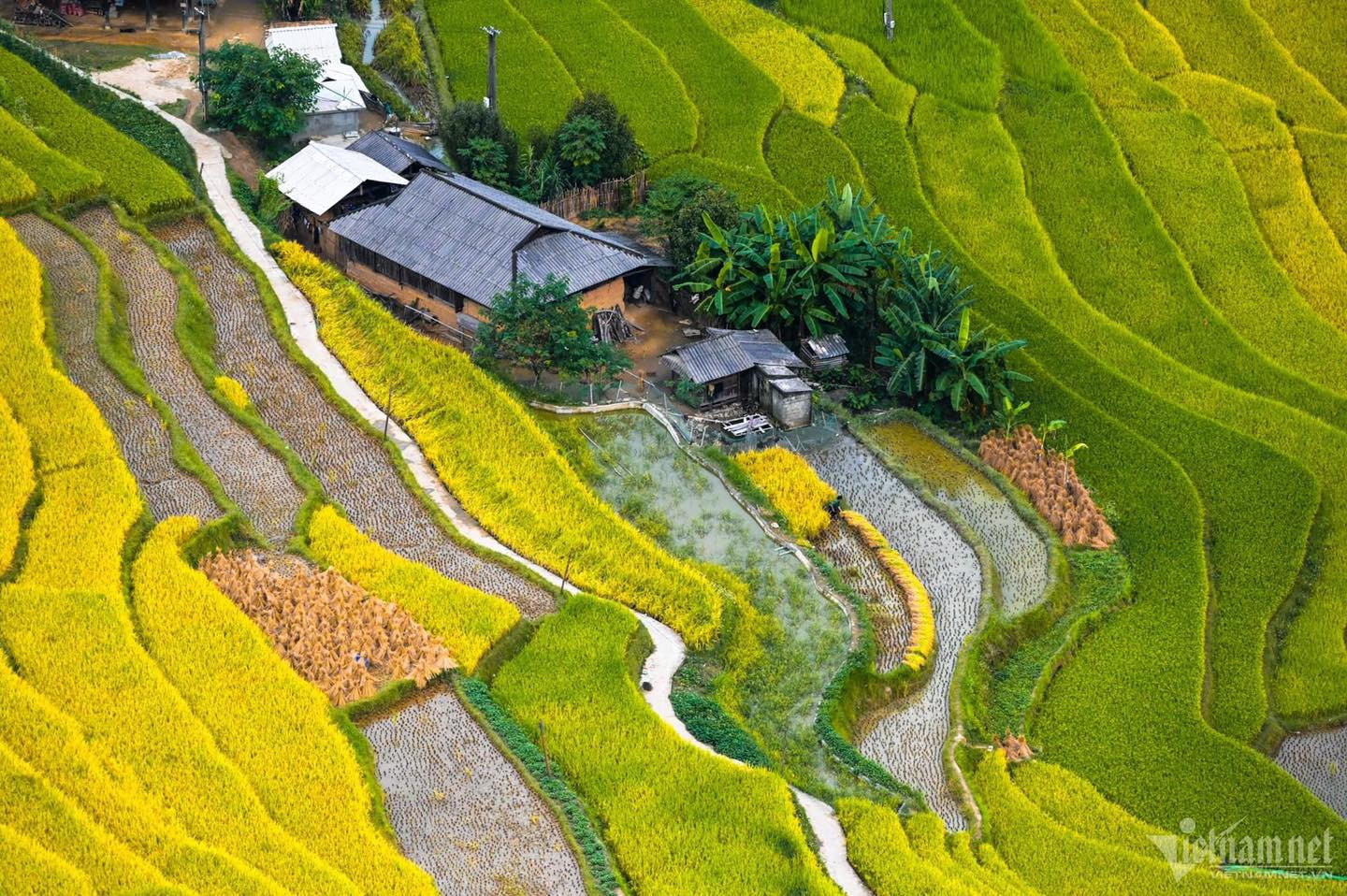
In recent years, Ha Giang has focused on developing agricultural tourism and a number of typical products such as: Terraced field tourism in Hoang Su Phi; Buckwheat flowers in four districts in the stone plateau; tours to discover ancient Shan Tuyet tea in Tay Con Linh.
Ha Giang is not only famous for its wild, poetic, and majestic landscapes, but also a convergence of many traditional cultural beauties and a long history. In Ha Giang, agriculture is still an important economic sector, playing a key role in the economy.
In agricultural production, with favorable conditions in terms of climate, soil, and rainfall, the province has developed many types of crops and livestock with high economic value, aiming to turning them into specialty products such as: Sanh Orange, Shan Tuyet tea, cardamom, seedless persimmon, buckwheat, mint honey, Lung Pu black pig, Vang cow...
Natural features, unique farming methods in agriculture to create specific agricultural products along with culinary cultural diversity are the materials for Ha Giang to upgrade its agricultural tourism.
Agricultural products of Ha Giang ethnic minorities have recently been formed and developed with unique product models such as: terraced field tourism products in Hoang Su Phi district; Buckwheat flowers in four districts in the stone plateau; tours to discover the ancient Shan Tuyet tea trees on Tay Con Linh peak; the Sanh orange gardens in Bac Quang... Through agricultural tourism, Ha Giang’s specialties have been well introduced to tourists and customers.
The province has recognized five tourist routes connecting community-based tourism products, such as: the tourist route in the western of Ha Giang to Dong Van Stone Plateau and Bac Me lake bed; the route connecting 4 districts of Dong Van Karst Plateau Global Geopark; the historical spiritual tourism route named "Visit to ancient battlefields". Many rural and community tourist attractions are also effectively explored, attracting a large number of visitors. On average, local tourist attractions attract from 2,000 to 45,000 visitors per year.
Ha Giang is building a community-based tourism model according to ASEAN standards (5 households in Nam Dam village, Quan Ba commune, Quan Ba district have been certified with ASEAN awards for homestay). Some models are invested to become high-quality sites, forming a system of mini resorts associated with community-based tourism, such as the community-based tourism model of Nam Hong village, Thong Nguyen commune in Hoang Su Phi district, or the community-based tourism service complex in Pa Vi Ha village, Pa Vi commune of Meo Vac district.
To develop the tourism industry in general and agricultural tourism products in particular, Ha Giang has issued many guidelines, mechanisms and policies, including Resolution No. 11 dated 2021 of the Provincial Party Committee on tourism development in Ha Giang province for the period 2021 - 2025; Plan No. 43 in 2022 of the Provincial People's Committee on tourism product development in the period 2022 - 2025; Resolution No. 10 of 2023 of the Provincial People's Council stipulating a number of policies to support tourism development until 2028.
Thanks to these policies, agricultural tourism has become a unique tourism product that attracts tourists to Ha Giang. However, the development of agricultural tourism in the province still has many limitations that need to be overcome, which are: The majority of agricultural tourism activities and high-quality agricultural tourism in the province are still spontaneous, not commensurate with potential and advantages; Tourism planning and infrastructure are not truly synchronized; Tourism products are still monotonous, not competitive enough with the increasingly developing tourism market of the provinces in the region; The income of local people from agricultural tourism is limited, tourists' spending on agricultural tourism is mainly in accommodation services, buying sightseeing tickets, and eating out.
Reality shows that to promote the effectiveness of experiential agricultural tourism, it is necessary to have coordination among sectors such as building planting schedules for major food crops and farming methods to create safe agricultural products for consumption and tourists.